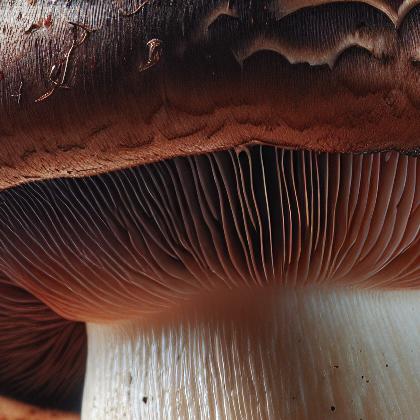Portobello Mushroom

A mushroom (or toadstool) is the fleshy, spore-bearing fruiting body of a fungus, typically produced above ground on soil or on its food source. The standard for the name "mushroom" is the cultivated white button mushroom, Agaricus bisporus; hence the word "mushroom" is most often applied to those fungi (Basidiomycota, Agaricomycetes) that have a stem (stipe), a cap (pileus), and gills (lamellae, sing. lamella) or pores on the underside of the cap. These pores or gills produce microscopic spores that help the fungus spread across the ground or its occupant surface."Mushroom" describes a variety of gilled fungi, with or without stems, and the term is used even more generally, to describe both the fleshy fruiting bodies of some Ascomycota and the woody or leathery fruiting bodies of some Basidiomycota, depending upon the context of the word.Forms deviating from the standard morphology usually have more specific names, such as "puffball", "stinkhorn", and "morel", and gilled mushrooms themselves are often called "agarics" in reference to their similarity to Agaricus or their place Agaricales. By extension, the term "mushroom" can also designate the entire fungus when in culture; the thallus (called a mycelium) of species forming the fruiting bodies called mushrooms; or the species itself.
Portobello mushroom Pairs With:
Portobello mushroom Properties:
| Food Property | Type | Description |
|---|---|---|
| Flavor Profile | Umami | Portobello mushrooms have a rich, savory taste often described as umami. |
| Texture | Firmness | Portobello mushrooms have a firm texture that holds up well to cooking methods like grilling or roasting. |
| Nutritional Value | Micronutrients | Portobello mushrooms are a good source of various micronutrients such as potassium, phosphorus, niacin, riboflavin, and selenium. |
| Color | Natural Pigments | Portobello mushrooms have a dark brown color due to the presence of natural pigments like melanin. |
| Aroma | Volatile Compounds | Portobello mushrooms have a earthy aroma due to the presence of volatile compounds. |
Food Pairing App - Version 1.2.0
